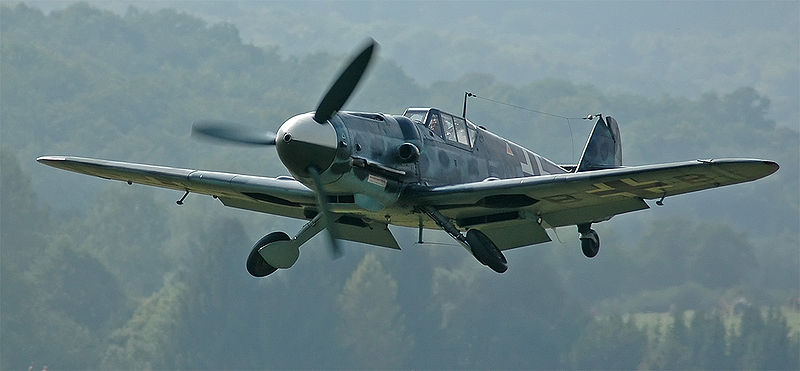Building Spitfires, Slowly
The legendary WWII fighter wasn’t so fast getting out of the factory
/https://tf-cmsv2-smithsonianmag-media.s3.amazonaws.com/filer/20120523040013Spitfire.jpg)
The legendary Supermarine Spitfire gave the British a fighter that could compete with Germany’s Messerschmitt Bf 109F/G at all altitudes during World War II. Jane’s Recognition Guide notes that the Bf 109G was the most successful variant of all the 109s, with some 24,000 produced from 1942 until the end of the war. Although it could zip along at almost 400 miles per hour, “the continual addition of weighty items like wing cannon and larger engines to the slight airframe of the Bf 109 eliminated much of the fighter’s manoeuverability, and instead served to emphasize the aircraft’s poor low speed performance and lateral control.”
When it came to construction time, though, the Spitfire couldn’t compare to its German rival. Historian Stephen Bungay writes in his book The Most Dangerous Enemy: An Illustrated History of the Battle of Britain:
Corelli Barnett, in Audit of War, ruefully compares the 13,000 man-hours needed to make a Spitfire Mk V airframe with the 4,000 for an Me 109G. (The Spitfire also took two-and-a-half times as long to make as a Hurricane, though Barnett does not mention this.) He is correct that Willy Messerschmitt took production needs into account in his design. Mitchell took nothing except performance into account, and this was one of the consequences. Maybe he would have done better to do so, but the advantages of his design over the 109 have also to be considered. Even German engineers would have had trouble with the wing, which allowed every Spitfire pilot to outturn any 109 (Heinkel had rejected the elliptical wing after his experience with the He 70 because it was so difficult to manufacture in quantity.) Nonetheless, despite all the incompetence it could muster, British industry finally managed to make 22,000 Spitfires.
